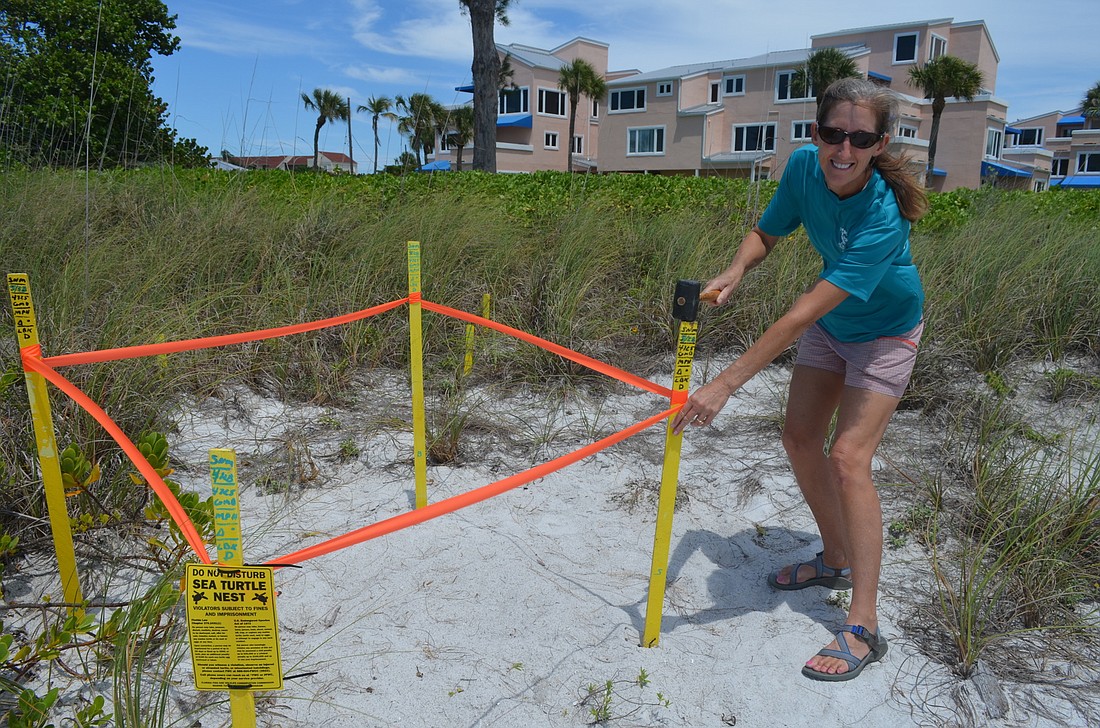- April 18, 2024
-
-
Loading

Loading

Cyndi Seamon hasn’t been a lifelong turtle enthusiast, but when she moved to Siesta Key in 2002, she found her passion on a Sierra Club turtle walk. She moved to Longboat Key a year later and began turtle patrol work with Longboat Key Turtle Watch. She is now the group’s vice president and patrols the beaches three mornings a week.
Q: When was the first time you saw a nest hatch?
A: You have to be in the right place at the right time. I didn’t see one for my first three years, and some people walk for 15 years and never see a hatching.
Q: It’s hard to get up at 5:30 a.m. How do you do it?
A: I’m a morning person, so it’s not a huge problem for me. I live on Longboat, so I have it easy compared to other volunteers. Some have to drive really, really far. We have volunteers from Lakewood Ranch, and in the past, we’ve had someone all the way from Parrish.
Q: How do you spend your mornings during the months of November through April?
A: Besides sleep in? I’m busy with other organizations. I volunteer for Save Our Seabirds and the Citizens Advisory Committee of the Sarasota Bay Estuary Program. There’s always stuff going on. It’s very easy to meet people down here, and there are always things to do.
Q: Before you were helping out the turtles, what did you do in your life up north?
A: I still got up really early in the morning. I was a real estate closer for a title company, and I had a much bigger commute. My husband, Mike, and I both love the snow, but we love the weather and being by the water here.
Q: Why doesn’t Turtle Watch advertise public nest openings anymore?
A: The Florida Fish and Wildlife Conservation Commission was concerned too many people would come, and we’d be unable to communicate the right information. They were concerned we wouldn’t be able to educate the crowd. So now, we have a list of people who get notified, and if people want to be on the list, they can call.
Q: What do you say to those who think the town focuses too much on turtles?
A: Turtles have been nesting for a very long time, before we got here, and they still do it despite us being here. We need to learn to share this with them and respect each other’s territory. Most people are really good at that. If everybody can work together to make people safe and also be turtle-friendly, what’s wrong with that? We need to be able to see, but we don’t need to light the sky.
Q: Why do turtle watchers walk first thing in the morning?
A: We’re trying to get out before anyone disrupts any of the crawl activity, so we can send accurate information to Mote. People set their chairs and tents down right in tracks without even knowing. We try to beat them. Plus, you’d melt in the heat if you started later.
Q: Why do you use the stakes?
A: They’re to mark off the areas so people know they’re not supposed to disrupt nests...It also aids us greatly in finding activity each day. If you don’t have something to look for, you’d never be able to find the nest.
Q: What should you do if you find a hatchling?
A: Don’t put them in the water. If someone finds one during the day, he probably got disoriented during the night and is very tired. He really needs to rest. If you see one at night crawling toward the water, don’t mess with him because he’s going the right way. If he’s crawling east or parallel to the beach, get him in a bucket with moist sand and keep him out of light and air conditioning. Then call one of us.